UPSC Daily Current Affairs: 26th October 2024 | Current Affairs & Hindu Analysis: Daily, Weekly & Monthly PDF Download
GS3/Environment
Key Facts about Kadar Tribe
Source: The Hindu

Why in News?
In a significant move, the Kadar tribe of Vazhachal, Kerala, has begun actively restoring natural forests that have been degraded by invasive alien species.
About Kadar Tribe:
- The Kadars are an indigenous community primarily found in the southern regions of India, particularly in the forests of Kerala and Tamil Nadu.
- Recognized as a particularly vulnerable tribal group (PVTG) by the Government of India.
- The term “Kadar” is derived from "kaadu," meaning forest in both Tamil and Malayalam, highlighting their deep connection to forest environments.
Language:
- The Kadar people speak a Dravidian language, often referred to as Kadars, which shows influences from Tamil and Malayalam.
Occupation:
- Traditionally, the Kadar tribe has been a nomadic group, recognized for their hunter-gatherer lifestyle.
- They possess extensive knowledge of forest resources, relying on gathering honey, fruits, tubers, and medicinal plants for sustenance.
- While hunting was once a significant aspect of their livelihood, its prevalence has decreased in recent years.
- Some members of the Kadar tribe have recently engaged in small-scale agriculture and wage labor, yet they continue to heavily depend on forest produce.
- The tribe is known for its traditional medicinal practices, particularly in the use of herbs and plants for healing.
Relationship with Nature:
- The Kadar people maintain a symbiotic relationship with nature and believe in the coexistence of the Kadar community and the forest (Kaadu).
- They have established traditional protocols to ensure the sustainable use of forest resources, ensuring that every practice of resource collection allows time for regeneration.
Social Structure:
- The Kadar community follows a simple social structure, typically organized around extended families.
- They reside in small settlements known as “hamlets” or “oorus,” which are generally composed of a few huts constructed from bamboo, leaves, and other forest materials.
- The estimated population of the Kadar tribe was around 2,000 individuals in the early 21st century.
Cultural Practices:
- The Kadar people worship jungle spirits and their own creator couple, as well as local forms of Hindu deities.
GS1/Indian Society
What is the National Mission for Manuscripts (NMM)?
Source: The Hindu
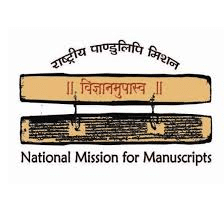
Why in news?
The Union Ministry of Culture is planning to "revive and relaunch" the National Mission for Manuscripts (NMM). They are considering the establishment of an autonomous body to aid in the preservation of ancient texts in India. This new entity, likely to be called the National Manuscripts Authority, will operate independently under the Ministry of Tourism and Culture.
About National Mission for Manuscripts (NMM):
- Established in February 2003 by the Ministry of Tourism and Culture, Government of India.
- Mandate includes documenting, conserving, and disseminating knowledge preserved in manuscripts.
- Motto: ‘Conserving the past for the future’.
- A unique initiative aimed at uncovering and preserving India's vast manuscript heritage.
- India is estimated to have around ten million manuscripts, making it potentially the largest collection globally.
- Manuscripts cover diverse themes, textures, aesthetics, scripts, languages, calligraphies, illuminations, and illustrations.
- Approximately 75% of existing manuscripts are in Sanskrit, while 25% are in various regional languages, according to NMM.
Objectives:
- Locate manuscripts through a comprehensive national survey, ensuring every manuscript and repository is documented.
- Create a National Electronic Database, which currently holds information on four million manuscripts, making it the largest database of Indian manuscripts.
- Conserve manuscripts using both modern and traditional conservation techniques, while training new manuscript conservators.
- Educate the next generation of scholars in various fields related to Manuscript Studies, including languages, scripts, critical editing, cataloguing, and conservation.
- Enhance access to manuscripts by digitizing the rarest and most endangered texts.
- Facilitate public engagement with manuscripts through lectures, seminars, publications, and outreach programs.
- To achieve these goals, the mission operates more than 100 Manuscript Resource Centres and Manuscript Conservation Centres across India.
What is a Manuscript?
- A manuscript is defined as a handwritten document on materials such as paper, bark, cloth, metal, or palm leaf, dating back at least seventy-five years and possessing significant historical, scientific, or aesthetic value.
- Manuscripts do not include lithographs or printed volumes.
- They are available in numerous languages and scripts, often with one language represented in multiple scripts. For instance, Sanskrit may be written in Oriya, Grantha, Devanagari, and other scripts.
- Manuscripts differ from historical records like epigraphs, firmans, and revenue records, which provide direct historical information rather than knowledge content.
GS2/Governance
Bhu-Aadhaar
Source: The Print

Why in News?
According to data available on the rural development ministry’s portal, around 30 percent of the rural land parcels in the country have been given a Unique Land Parcel Identification Number (ULPIN) or Bhu-Aadhaar.
About Bhu-Aadhaar:
- Bhu-Aadhaar is also known as ULPIN (Unique Land Parcel Identification Number).
- ULPIN was launched in 2021 as part of the Central government’s Digital India Land Records Modernisation Programme (DILRMP).
- The primary goal of ULPIN is to streamline and standardize the method used by states to assign unique identification numbers to land parcels.
- The ULPIN is assigned based on the longitude and latitude coordinates of the land and relies on detailed surveys and geo-referenced cadastral maps.
- Each land parcel is given a 14-digit alpha-numeric identity, which includes:
- State code
- District code
- Sub-district code
- Village code
- Unique plot ID number
- Once generated, the ULPIN or Bhu-Aadhaar is affixed to the physical land record document held by the landowner.
- This ULPIN is permanently linked to the specific plot of land, remaining unchanged even if the land is sold, subdivided, or altered in any way.
Key Objectives of ULPIN/Bhu-Aadhaar:
- To assign a distinct ID to each plot of land for easier identification and retrieval of records.
- To establish accurate digital land records detailing landowners, plot boundaries, area, usage, etc.
- To connect land records with property registration processes.
- To enable online access to land record services.
- To support government planning by maintaining up-to-date land data.
GS2/Governance
Karmayogi Saptah
Source: PIB
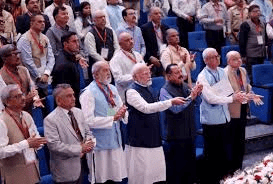
Why in news?
Prime Minister recently launched the ‘Karmayogi Saptah’ – National Learning Week to strengthen individual and organizational capacity among civil servants.
About
What is it?
- National Programme for Civil Services Capacity Building (NPCSCB)
Objective
- To equip civil servants for future challenges, enhancing their creativity, constructive approaches, and innovation through transparency and technology.
Launch Date
- Launched on 2nd September 2020
Key Features
- On-Site Learning: A focus on practical experience that complements off-site learning.
- Integrated Government Online Training (iGOT) platform.
Pillars of NPCSCB
- Policy Framework
- Institutional Framework
- Competency Framework
- Digital Learning Framework (iGOT-Karmayogi)
- e-HRMS
- Monitoring and Evaluation Framework
Target Audience
- All civil servants, including contractual employees, across various ministries, departments, organizations, and agencies of the Union Government.
iGOT-Karmayogi Features
- My iGOT: Offers personalized training courses based on individual capacity-building needs.
- Blended Programs: Combines offline classroom learning with online components for equitable access to training.
- Curated Programs: Tailored learning paths designed for different ministries and training institutions.
Vision for 2047
- Aims to transform India into a global manufacturing hub and a supplier of skilled human resources by enhancing governance and civil service efficiency.
Steering Bodies
- Prime Minister’s Public Human Resources Council
- Capacity Building Commission
- Special Purpose Vehicle (SPV) for digital assets
- Coordination Unit led by the Cabinet Secretary
Courses Offered
- The iGOT platform offers over 1400 courses for personalized learning and skill development.
Significance
- Promotes a whole-of-government approach to foster collaboration, break bureaucratic silos, and prepare civil servants for modern governance challenges through continuous capacity building.
How Karmayogi Saptah Aligns with Mission Karmayogi’s Goals?
- Karmayogi Saptah enhances a culture of lifelong learning and continuous improvement, which are essential pillars of Mission Karmayogi.
- It emphasizes innovation and a citizen-first mindset, encouraging civil servants to embrace new ideas and feedback mechanisms.
- By focusing on adapting to new technologies like AI, it aligns with the goal of a digitally skilled workforce.
- It supports the mission’s aim to break silos and promote a “One Government” ethos through coordinated efforts across departments.
- Through individual and organizational development activities, the week contributes to creating a skilled, motivated workforce for a Viksit Bharat by 2047.
PYQ:
[2015]Consider the following statements:
1. The Executive Power of the union of India is vested in the Prime Minister.
2. The Prime Minister is the ex officio Chairman of the Civil Services Board.
Which of the statements given above is/are correct?
(a) 1 only
(b) 2 only
(c) Both 1 and 2
(d) Neither 1 nor 2
GS3/Environment
Asola Bhatti Wildlife Sanctuary
Source: The Hindu
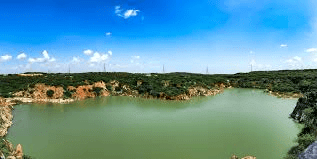
Why in News?
Recently, the Delhi High Court instructed local authorities to prioritize the relocation of all monkeys in the Capital to the Asola Bhatti Wildlife Sanctuary.
Location and Significance
- The Asola Bhatti Wildlife Sanctuary is situated in southern Delhi, extending into the northern regions of Faridabad and Gurugram in Haryana.
- This sanctuary is positioned on the southern ridge of Delhi and is part of the northern segment of the ancient Aravalli Hill Range, which is among the oldest mountainous formations in India.
- It forms an integral part of the Sariska-Delhi Wildlife Corridor, a vital ecological link between the Sariska Tiger Reserve in Rajasthan and the Delhi Ridge.
- The sanctuary encompasses an area of 32.71 square kilometers.
Vegetation
- According to Champion & Seth (1968), the sanctuary's vegetation is classified under the Northern Tropical Thorn Forests type.
- The native flora exhibits xerophytic adaptations, characterized by features such as thorny appendages, wax-coated leaves, succulent structures, and tomentose leaf surfaces that help them survive in arid conditions.
- Flora includes:
- Dominant Exotic Species: Prosopis juliflora.
- Dominant Native Species: Diospyros montana.
Fauna
- The sanctuary is home to a diverse range of wildlife, including:
- Golden Jackals
- Striped Hyenas
- Indian Crested Porcupines
- Civets
- Jungle Cats
- Various Snakes
- Monitor Lizards
- Mongoose
GS3/Economy
21st National Livestock Census 2024, begins
Source: The Hindu
 Why in News?
Why in News?
The Centre has launched the 21st Livestock Census (LC), a five-yearly exercise aimed at counting the livestock population across the country.
Innovations in the 21st Livestock Census:
- This census marks the first time data collection is being conducted through a mobile app, which enhances both accuracy and timeliness.
- The census will encompass 15 species of animals (excluding poultry) such as cattle, buffalo, mithun, yak, sheep, goat, pig, camel, horse, donkey, and elephant.
- It will also involve recording information on 219 indigenous breeds, livestock holdings by pastoralists, and the gender of individuals involved in livestock rearing.
About Livestock Census (LC):
- The Livestock Census (LC) is a comprehensive survey conducted every five years to enumerate all domesticated animals within households, enterprises, and institutions in both rural and urban locales.
- It provides in-depth data regarding the population, breeds, and distribution of livestock including cattle, buffalo, goats, sheep, pigs, and more.
- This census has been conducted by the Ministry of Animal Husbandry and Dairying in partnership with State/UT governments since 1919.
- The 21st Livestock Census (2024) is the most recent in this series and will utilize a dedicated mobile app for enhanced accuracy and real-time monitoring.
- Significance of the Livestock Census:
- Policy Formulation: Aids the government in crafting policies to foster growth in the livestock sector, including areas like breed improvement, disease management, and feed optimization.
- Rural Economy Support: Offers insights into the contribution of livestock to boosting rural incomes, nutrition, and job creation.
- Livestock Development Programs: The data collected will support various initiatives such as the National Livestock Mission (NLM), which emphasizes breed development, enhancements in feed and fodder, and innovations in livestock management practices.
- Indigenous Breed Conservation: Monitors indigenous livestock breeds to promote breed-specific conservation and sustainable practices.
- Previous Census Observations in India:
- 20th Livestock Census (2019):
- Total livestock population was recorded at 535.78 million, showing a 4.6% increase from the previous census conducted in 2012.
- Bovine population reached 302.79 million (including cattle, buffalo, mithun, and yak).
- Indigenous cattle population saw a decline, indicating a shift towards crossbred and exotic breeds.
- Exotic and crossbred cattle increased by 29.3%, driven by the growing demand for high milk-yielding breeds.
- Buffalo population grew by 1% to 109.85 million, significantly contributing to India's milk production.
- Sheep and goat populations rose by 14.1% and 10.1%, reaching 74.26 million and 148.88 million, respectively.
- Poultry population experienced substantial growth of 16.8%, totaling 851.81 million birds, reflecting the rise of commercial poultry farming.
- Female livestock population saw increases in female cattle (18%) and female buffaloes (8%), highlighting the focus on dairy production.
- 19th Livestock Census (2012):
- Noted an increase in buffalo populations and a decline in indigenous cattle.
- Marked significant growth in poultry numbers, illustrating changing agricultural and economic dynamics.
- 20th Livestock Census (2019):
- Previous Year Questions (PYQ):
- [2015] Discuss the potential of livestock rearing for providing non-farm employment and income in rural areas, suggesting suitable measures to promote this sector in India.
- [2012] Which of the following is the chief characteristic of 'mixed farming'? Options: (a) Cultivation of both cash crops and food crops (b) Cultivation of two or more crops in the same field (c) Rearing of animals and cultivation of crops together (d) None of the above.
GS2/International Relations
Exercise SIMBEX 2024
Source: PIB

Why in News?
The 31st edition of the Singapore India Maritime Bilateral Exercise (SIMBEX) is currently taking place at the Eastern Naval Command in Visakhapatnam.
About Exercise SIMBEX:
History
- Originally named Exercise Lion King.
- The exercise has been conducted annually since 1994.
Evolution
- The exercise has evolved from focusing solely on anti-submarine warfare to encompassing maritime security, as well as anti-air and anti-surface warfare.
Objectives
- Strengthen the strategic partnership between India and Singapore.
- Enhance interoperability and awareness of the maritime domain.
- Promote cooperation in addressing shared maritime challenges.
Phases
- Harbour Phase
- Includes Subject Matter Expert Exchanges (SMEEs) for effective knowledge sharing.
- Features cross-deck visits and sports activities.
- Conducts pre-sail briefings between the two navies.
- Sea Phase
- Involves advanced naval drills including live weapon firings.
- Conducts anti-submarine warfare (ASW) training.
- Incorporates anti-surface and anti-air operations.
- Includes seamanship evolutions and tactical maneuvers.
Significance
- SIMBEX-2019 was notably conducted in the South China Sea, involving various maritime combat exercises.
- This exercise is recognized as the longest uninterrupted naval exercise that India conducts with any other country, according to a statement from the Indian High Commission in 2019.
GS3/Science and Technology
Nemaline Myopathy
Source: Hindustan Times

Why in News?
Recently, the Chief Justice of India during a national consultation on children's rights, discussed about nemaline myopathy, a genetic condition affecting his foster daughters.
About Nemaline Myopathy:
- Nemaline myopathy is a rare genetic muscle disorder.
- It is characterized by thread-like structures within muscle fibers, which can significantly affect mobility and functionality.
- This condition is also referred to as rod myopathy.
- It is a rare congenital disorder that leads to weakening of the skeletal muscles.
- Hereditary in nature, it arises from genetic mutations that influence the proteins in muscles.
- The disorder occurs in roughly 1 in every 50,000 live births.
- Severity of the disorder can vary widely:
- Mild cases may have little to no impact on daily activities.
- Severe forms can cause significant muscle weakness, requiring extensive medical care.
Symptoms
- Muscle weakness in the face, neck, and trunk.
- Difficulties in feeding and breathing.
- Potential physical deformities, including:
- Foot deformities.
- Abnormal curvature of the spine (scoliosis).
- Joint deformities (contractures).
Treatment:
- Currently, there is no known cure for nemaline myopathy.
- Treatment primarily focuses on managing symptoms and may include:
- Supportive care.
- Physiotherapy to enhance mobility.
- Muscle strengthening exercises to improve function.
GS3/Environment
Why ‘protected’ areas are seeing faster biodiversity decline?
Source: Indian Express
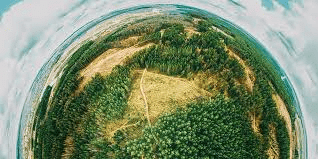
Why in News?
According to a recent study conducted by the Natural History Museum (NHM) in London, biodiversity is decreasing more rapidly within key protected areas than outside of them.
What did the Biodiversity Intactness Index (BII) say?
- The Biodiversity Intactness Index is a quantitative measure that evaluates the state of terrestrial biodiversity against its natural baseline, prior to significant human interference.
- Globally, it decreased by 1.88 percentage points between 2000 and 2020, indicating a loss in the average natural biodiversity across various regions.
- Within the 22% of 'Critical Biodiversity Areas' that are protected, there was a 2.1 percentage point decline, whereas non-protected areas experienced a decline of 1.9 percentage points during the same timeframe.
Why is the decline happening?
- Inadequate Ecosystem Protection: Many protected areas prioritize specific species instead of the entire ecosystem, which results in a failure to maintain overall biodiversity intactness.
- Pre-existing Degradation: Some protected regions might have already been degraded before they were designated as protected, limiting their effectiveness in conserving biodiversity.
- External Threats: Activities such as oil, gas, and mining concessions intrude on protected areas, leading to habitat destruction and further loss of biodiversity.
- Climate Crisis Impact: The increasing frequency of extreme weather events, including droughts and wildfires, has severely impacted protected areas, undermining conservation efforts.
Steps taken by the Indian Government to conserve biodiversity:
- Legislative Framework:
- Biological Diversity Act, 2002: This act was established to conserve biological resources and regulate access to these resources, ensuring fair sharing of benefits derived from their use.
- Wild Life (Protection) Act, 1972: This act facilitates the creation of Protected Areas for wildlife conservation and imposes penalties for unlawful hunting.
- Conservation Policies:
- Project Tiger: Initiated in 1973, this program aims to protect tiger populations within designated reserves.
- Project Elephant: Launched in 1992, it focuses on managing and protecting wild elephant populations and their habitats.
- National Biodiversity Mission: This mission mode initiative is aimed at documenting and conserving India's biodiversity.
- Establishment of a Protected Area Network: This network includes National Parks, Wildlife Sanctuaries, Conservation Reserves, and Community Reserves, enhancing protection for wildlife and their habitats.
- Designation of Biosphere Reserves: These reserves are aimed at conserving representative ecosystems.
What should be done? (Way forward)
- Ecosystem-Centric Management: Shift the focus from individual species to the overall health of ecosystems to ensure comprehensive protection of habitats and their interdependent species.
- Strengthened Protection and Regulation: Implement stricter regulations to limit industrial activities (e.g., oil and gas exploration) within and around protected areas, alongside enforcing more robust land-use policies.
- Community Engagement and Education: Involve local communities in conservation efforts and enhance public awareness about the importance of biodiversity, fostering a collective responsibility for sustainable practices.
GS3/Environment
Emissions Gap Report 2024
Source: DTE

Why in News?
According to the newly released Emissions Gap Report 2024, if countries continue with their current environmental policies, global warming may reach 3.1 degrees Celsius above pre-industrial levels.
About Emissions Gap Report (EGR):
- The EGR is an annual publication by the United Nations Environment Programme (UNEP).
- This series monitors progress towards limiting global warming to well below 2°C and striving for 1.5°C in alignment with the Paris Agreement.
- Since 2010, the report has delivered a yearly scientific assessment of the gap between projected future global greenhouse gas (GHG) emissions, if countries fulfill their climate commitments, and the levels needed to avert severe climate change impacts.
- Additionally, each report highlights critical opportunities to close the emissions gap and focuses on a specific issue of interest.
- The EGR is released annually prior to the UN Climate Change Conference of the Parties (COP) to inform climate negotiations among UN Member States.
Highlights of 2024 EGR:
- The report, titled “No More Hot Air... Please!”, emphasizes that without a collective reduction of annual GHG emissions by 42% by 2030 and 57% by 2035, the Paris Agreement's target of limiting global temperature rise to 1.5°C will become unachievable within a few years.
- To meet the 2°C target, emissions must decrease by 28% by 2030 and by 37% by 2035.
- The UNEP warns that without significant improvements to Nationally Determined Contributions (NDCs)—which are national climate action plans updated every five years—global temperatures might rise between 2.6°C and 3.1°C by the end of the century.
- In 2023, global GHG emissions increased by 1.3% compared to 2022, with the power sector being the largest contributor, followed by transport, agriculture, and industry.
- Among major economies, India recorded the most significant increase in GHG emissions in FY23, rising by 6.1%, while China followed closely with a 5.2% increase.
- In contrast, GHG emissions decreased in both the European Union (EU) and the United States (US) by 7.5% and 1.4%, respectively.
- Despite the rise in India's emissions, its total remains relatively low at 4,140 million metric tons of carbon dioxide equivalent (MtCO₂e) compared to China's 16,000 MtCO₂e and the US's 5,970 MtCO₂e.
- The EU's emissions were slightly less than India's, totaling 3,230 MtCO₂e.
- India ranks as the third largest emitter globally, following China and the United States.
- The six largest GHG emitters are responsible for 63% of total global GHG emissions, whereas least developed countries contribute only 3%.
GS3/Environment
What is Begonia neisti?
Source: Arunachal Times
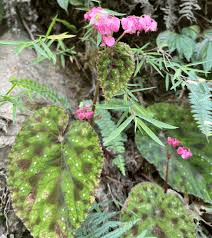
Why in News?
A team of researchers recently made a significant discovery in the remote Dibang Valley of Arunachal Pradesh, uncovering a new species of flowering plant, Begonia neisti.
About Begonia neisti:
- Begonia neisti is a newly identified species of flowering plant.
- This species was discovered in the Dibang Valley district of Arunachal Pradesh.
- It belongs to the begonia sect Platycentrum.
- The genus Begonia is one of the largest groups in the plant kingdom, comprising over 2,100 known species worldwide, many of which are prized for their ornamental qualities.
- The name 'Begonia neisti' honors the North East Institute of Science and Technology (NEIST) in recognition of its 60-year anniversary and its significant contributions to science and technology for the local communities in Northeast India.
- Begonia neisti features striking variegated leaves, which are decorated with white-silver circular spots and dark brownish-red patches around the veins.
- This plant is characterized by its large leaves and a distinctive white stripe that runs along its stems and petioles, giving it a unique appearance compared to other species of Begonia.
- It thrives in moist, hilly environments between Hunli and Anini, typically blooming from November to January.
- This species is currently classified as Data Deficient (DD) by the IUCN Red List, indicating a lack of sufficient data to assess its risk of extinction.
- Unfortunately, Begonia neisti's natural habitat is under threat due to road expansion, raising concerns regarding its future survival.
GS2/Polity
The right to die with dignity — SC rulings and what the law says in India
Source: Indian Express

Why in news?
The Ministry of Health and Family Welfare has put forth draft guidelines to enact the Supreme Court's rulings from 2018 and 2023 regarding the right to die with dignity. These guidelines serve as a framework for state authorities and medical institutions to facilitate the withdrawal of life support from terminally ill individuals. While India does not have specific laws governing the withdrawal of life-sustaining treatment, these guidelines endorse its legality under a regulated framework.
Understanding Withholding or Withdrawing Life-Sustaining Treatment
- Euthanasia, commonly referred to as 'mercy killing', involves ending the life of a terminally ill patient to alleviate suffering.
Living Will
- Medical Procedure for Withholding or Withdrawing Life-Sustaining Treatment
- Withholding or withdrawing life-sustaining treatment means ceasing medical interventions, like ventilators or feeding tubes, when they do not improve the patient's health or solely prolong suffering.
- These treatments can temporarily replace vital bodily functions but may be stopped to allow the natural course of illness, shifting focus to comfort care and symptom relief instead.
- Right to Refuse Medical Treatment
- The right to refuse medical treatment is a well-established principle in common law, recognized as a fundamental right under Article 21 (Right to life and personal liberty) of the Indian Constitution, following the 2018 Supreme Court ruling in Common Cause vs Union of India.
- This right permits patients to decline life-sustaining treatments, even if such refusals might result in death.
Process for Withholding or Withdrawing Life Support
- Through Patient Consent: A patient with decision-making capacity can refuse treatment.
- Through Advance Directives or ‘Living Wills’: Patients can detail their wishes in a 'living will' to guide future medical decisions if they become incapacitated.
- For Patients Without Capacity or Living Will: If a patient is unable to make decisions and lacks a living will, the physician may suggest withholding or withdrawing treatment if recovery is unlikely and continuing treatment would only prolong the dying process.
Understanding Euthanasia and Misconceptions Around “Passive Euthanasia” in India
- Euthanasia refers to the deliberate ending of a terminally ill patient's life by a medical professional to alleviate suffering.
- In India, "passive euthanasia" usually pertains to withholding or withdrawing life-sustaining treatment, but this terminology can create misunderstandings and societal fears about the right to die with dignity.
- A glossary published by the Indian Council of Medical Research in 2018 noted that this term is often misinterpreted and lacks social approval.
Withholding or Withdrawal of Life Support and Do-Not-Attempt-Resuscitation (DNAR) Orders
- The process of withdrawing life-sustaining treatments may involve "do-not-attempt-resuscitation" (DNAR) orders, wherein a physician, in consultation with the patient or their family, decides against resuscitation efforts.
- It is important to note that DNAR does not imply the cessation of other medical treatments; it solely pertains to limiting resuscitation measures.
Does Withholding or Withdrawing Treatment Mean Giving Up on the Patient?
- Opting not to continue life-sustaining treatment does not equate to abandoning the patient; rather, it acknowledges when medical interventions are ineffective and merely extend suffering.
- In such scenarios, the emphasis shifts to palliative care, focusing on ensuring the patient's comfort.
- Conversely, discharging patients against medical advice can lead to insufficient care, resulting in increased suffering for both patients and their families.
- To uphold the right to die with dignity, the Supreme Court established guidelines in 2018 for the creation of living wills, which were later simplified in 2023.
- A living will allows individuals aged 18 and above to specify their healthcare preferences in the event they lose the capacity to make decisions.
- The document must designate at least two trusted surrogate decision-makers.
- For it to be legally binding, it must be signed in the presence of an executor, two witnesses, and certified by a notary or a gazetted officer.
Guidelines by SC
- The Supreme Court's guidelines detailed a structured approach for the withholding or withdrawal of life-sustaining treatment.
- They emphasized the rights and responsibilities of both healthcare providers and patients, ensuring an independent expert evaluation and consent from family members or surrogate decision-makers.
Primary Medical Board Assessment
- A Primary Medical Board, composed of the attending physician and two subject matter experts with at least five years of experience, is formed by the hospital.
- This board evaluates the patient's condition to determine the suitability of ceasing life-sustaining treatment.
Secondary Medical Board Review
- For further oversight, a Secondary Medical Board is established to review the Primary Board's conclusions.
- This board includes a registered medical practitioner appointed by the district Chief Medical Officer and two experienced subject matter experts, all of whom are different from those on the Primary Board.
Consent from Family or Surrogate Decision-Makers
- Consent from the patient's designated representatives in an advance directive or, if absent, from surrogate decision-makers is necessary before withholding or withdrawing treatment.
Judicial Notification
- The hospital is required to inform the local judicial magistrate about the decision to withhold or withdraw life-sustaining treatment.
Shared Decision-Making and Ethical Responsibility of Doctors
- The established process promotes "shared decision-making," involving both the medical team and the patient's family or surrogates in collaborative treatment decisions.
- This approach protects physicians legally, respects patient autonomy, incorporates family preferences, and upholds ethical standards without placing the entire burden on the physician.
|
38 videos|5288 docs|1117 tests
|
FAQs on UPSC Daily Current Affairs: 26th October 2024 - Current Affairs & Hindu Analysis: Daily, Weekly & Monthly
| 1. What is the significance of the Kadar Tribe in India? |  |
| 2. What is the purpose of the National Mission for Manuscripts (NMM)? |  |
| 3. What is Bhu-Aadhaar and how does it benefit the citizens? |  |
| 4. What does the Karmayogi Saptah initiative entail? |  |
| 5. What challenges are protected areas facing in terms of biodiversity decline? |  |
















